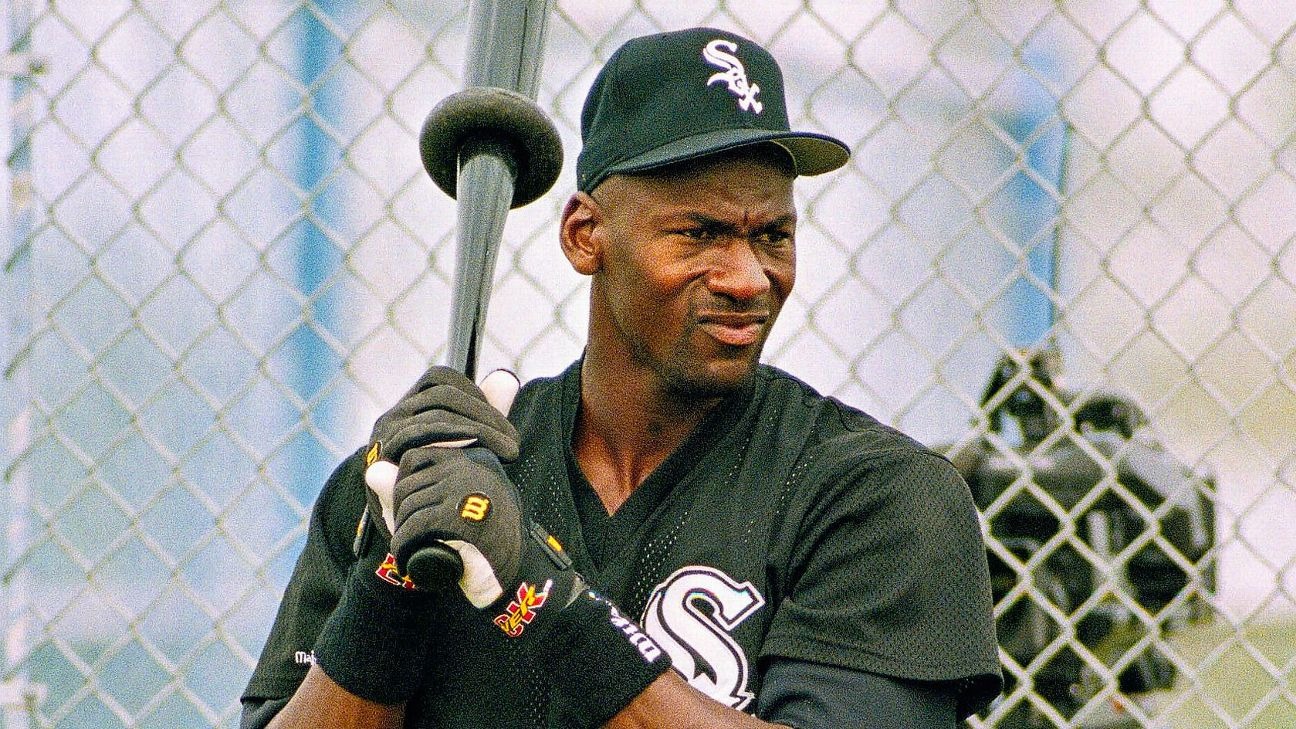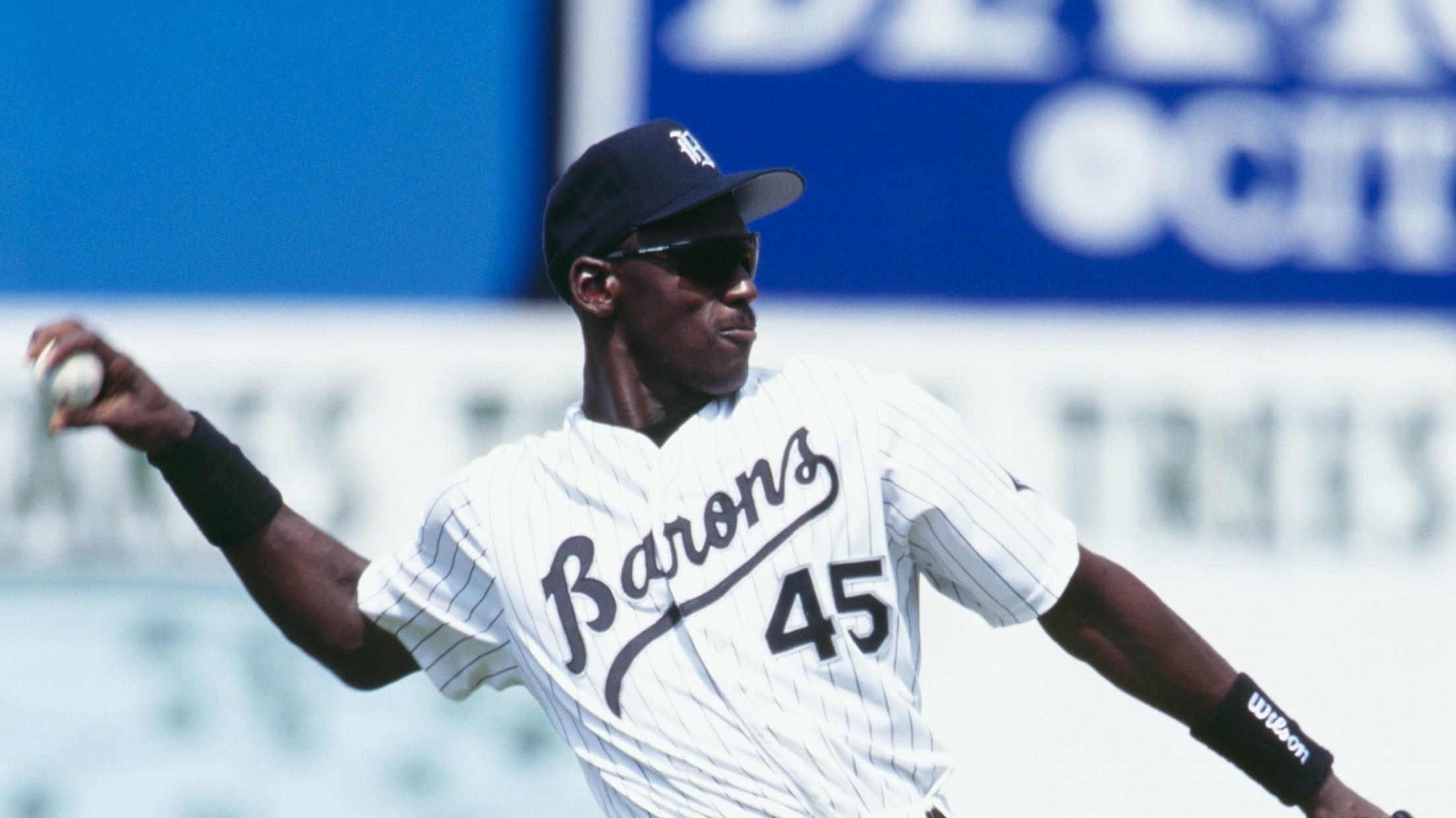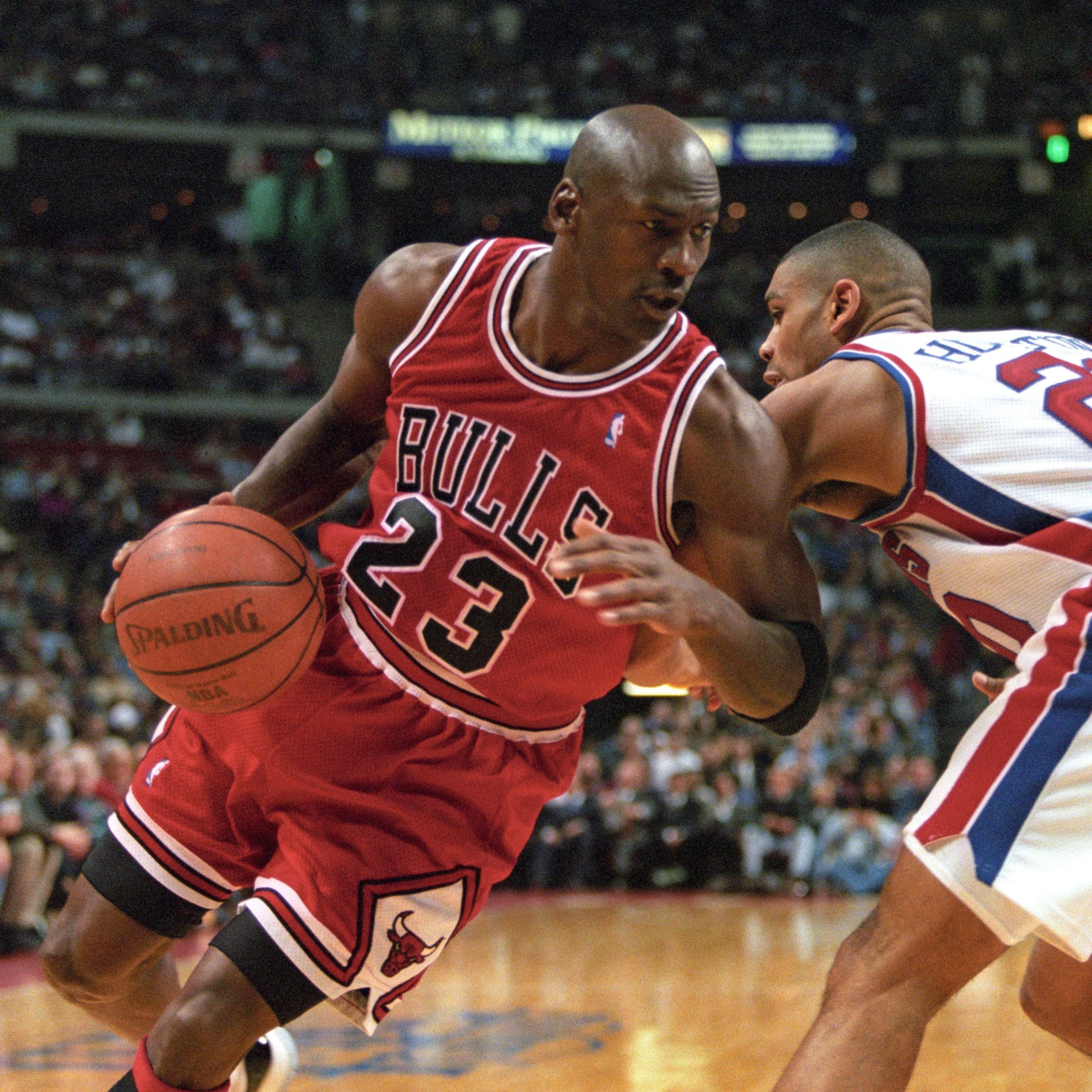On October 6, 1994, Michael Jordan stunned everyone by retiring from basketball at his career peak to follow his dream of playing professional baseball.
It’s rare for a 29-year-old with minimal injury history to leave their sport during their prime. But, Jordan explained to the Chicago media that he felt driven to honor his recently deceased father, who loved baseball, and had lost some of his passion for basketball.

Jordan’s impressive resume included nine consecutive All-Star appearances, seven straight scoring titles (averaging over 30.0 points per game each year), six consecutive All-NBA and All-Defensive First Team selections, two MVPs, a Defensive Player of the Year award, and most notably, three NBA Championships in a row. Despite these achievements, he chose to switch to baseball. Here’s everything you need to know about his time in a different sport.
How long did Michael Jordan play baseball?
Michael Jordan played 127 games for the Birmingham Barons in one season. Transitioning wasn’t easy; he had to learn a lot during his training season. Herm Schneider, a White Sox athletic trainer, helped him strengthen his core, toughen his hands and palms, and improve his body awareness for baseball.
Mike Huff, a White Sox outfielder, was his training partner and taught him how to hold and throw a baseball properly, slide, and have efficient footwork. Walt Hriniak, a player and White Sox hitting coach, provided extra batting practice.

Hriniak noted that Jordan was never late and never missed a training day. Jordan’s natural athleticism and strong work ethic impressed many, including his Birmingham manager at the time, Terry Francona, who believed Jordan could have made it to the pros as a reserve player if he had continued.
Jordan eventually fulfilled his father’s dream by playing in Major League Baseball, even if only for one game. In 1994, he played an exhibition game for the Chicago White Sox against the Chicago Cubs at Wrigley Field, starting in front of nearly 40,000 people. The game was memorable, with both Chicago teams and fans cheering for Jordan.
According to Sporting News, Cubs shortstop Shawon Dunston remarked, that he wanted him to hit for the cycle. Even though Jordan was playing for the Sox, “But he is Chicago. Let’s not fool ourselves,” he said. Jordan went 2-for-5 with two runs scored and one put-out, including a game-tying two-run single, with fans chanting “Rookie” as he stepped up to bat.

Michael Jordan’s baseball stats
Jordan played 127 regular-season games for the Birmingham Barons, the White Sox’s Double-A affiliate, in 1994. Here are his stats:
127 games, 497 plate appearances, 436 at-bats
.202/.289/.266 (average/on-base/slugging), .556 OPS
88 hits: 17 doubles, 1 triple, 3 homers
51 RBIs, 46 runs scored
30 stolen bases/18 caught stealing
51 walks, 114 strikeouts
His stats weren’t particularly impressive. The 30 stolen bases were notable, but being caught stealing 18 times lessened their impact.
For context, he only hit three home runs, but the entire Barons team hit just 40 that year, the lowest in the Double-A Southern League. Jacksonville, a Seattle affiliate, led the league with 131, and every other team hit at least 63. Jordan hit all three of his home runs in the second half of the season, though his average dipped after a strong start (.265 in his first month).

Jordan struck out 114 times in 497 plate appearances, a 22.9% strikeout rate compared to the Southern League’s average of 16.4%. Interestingly, this rate is close to the 23.0% average strikeout rate in MLB in 2019.
Jordan played right field for the Barons and, while he struggled at times, improved as the season went on. After the 1994 season, despite the major league players’ strike, Jordan didn’t immediately give up on baseball. He played in the Arizona Fall League, starting strong with a .317 average in his first 41 at-bats and finishing with a .252 average in 123 at-bats.